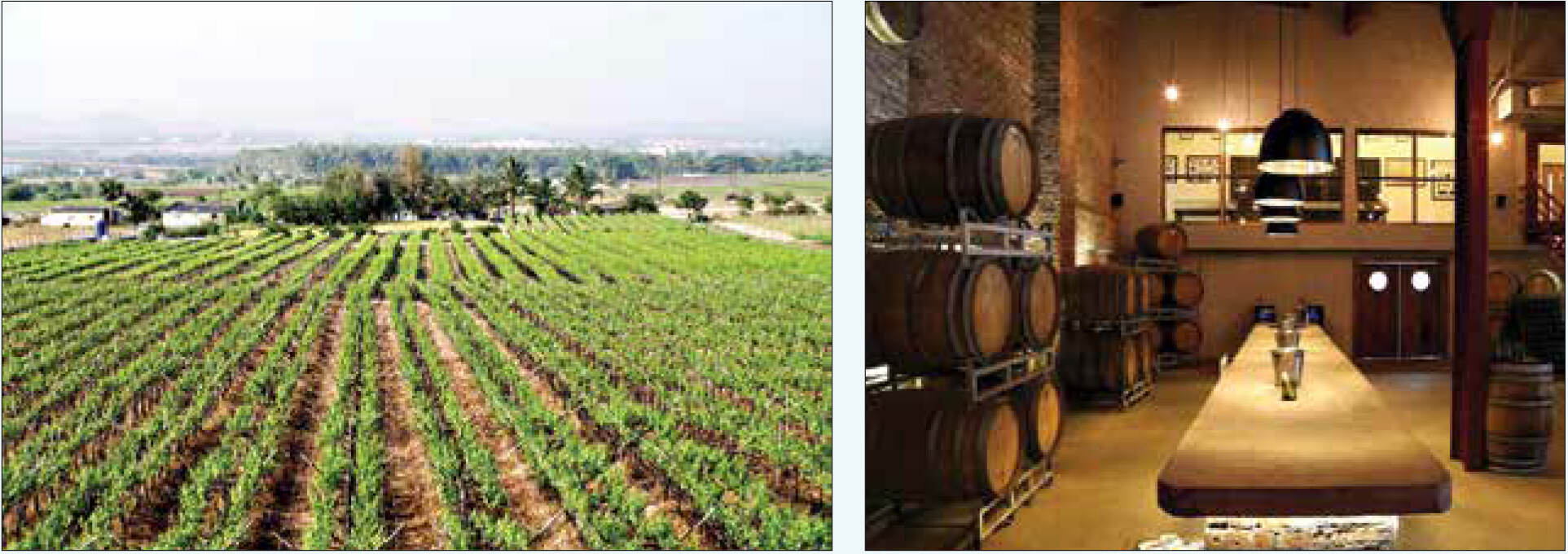From the vineyards of Nashik
The journey of Nashik grapes and Nashik wines — both of which dominate local and foreign markets — has been continuing with flourish ever since the fruit was first produced commercially in Ojhar by Ramrao Gaikwad a century ago

Nearly one century ago, an innovative farmer entrepreneur by the name of Ramrao J Gaikwad started the commercial production of grapes in the town of Ojhar in the vicinity of Nashik. The year was 1925, and there has been no looking back since then. Grapes became the 'new gold', and Nashik became the grape capital of the country, with about 1.75 lakh hectare of land under grape cultivation. Over the last two decades, another eight to ten thousand acres are now cultivated specifically for the production of wines.
Let us discuss the unique geography of Nashik District. It is located between 18.33 and 20.53-degree North Latitude, and between 73.16 degree and 75.16-degree East Longitude, in the state of Maharashtra. Come November, the temperature goes down and the cold winter follows. The fruit which ripens during this season has a good ratio of sugar and acid, which contribute to the superior quality of grapes and wines. One positive aspect of the high acidic content is that it helps in keeping good quality of grapes, and also acts as an insurance against fungus. The catchment areas of grape production in Nashik District are Kalvan, Peint Igatpuri, Sinnar, Niphad, Yeola, Nandgaon, Satana, Surgana, Dindori and Malegaon. The soil in this microclimatic zone consists of red soil with good drainage conditions. It is said that the water quality is also very suitable for growing high-quality grapes.
Growing of grapes
The process of nursery production starts in the month of October when saplings are sown in a special seeding plot. The saplings start growing in three weeks. After three months, the new seedlings become hardy. In the month of January, requisite inputs are given, and the soil is cultivated. The first foundation pruning takes place in the months of March-April, after which shoots appear. The shoots mature in May, and fruit buds appear in June, after which pruning for cropping takes place from September to November. The harvesting period in the Nashik region is from February to April. Nashik is the only region in the world in which harvesting is done during this period. Perhaps because of this reason, in the global marketplace, Nashik's grapes command a premium. The productive life of a plant extends from 12-14 seasons. Unlike the vineyards of Europe and North America, harvesting takes place manually, with the help of scissors. Stored and packaged grapes are then put into the plastic carats, which are 20 kg each. After that, the cleaned bunches are then weighted and packed into boxes of 2-5 kg.
The seven varieties of grapes grown in Nashik include the Thompson Seedless, Tas-a-Ganesh, Sonaka, Manik Chaman, Sharad Seedless, Jumbo Seedless and Black Sonaka. Thompson Seedless and its mutants — Sonaka, Tas-a-Ganesh and Manik Chaman — are mainly used for raisin production. The most popular variety, Tas-a-Ganesh, is oval in shape, green in colour and has a bigger bunch size. It is not very sweet and gives an average yield. In the case of Sonaka, the berry is long, the bunch size is large, and has a very sweet taste. This is preferred for making 'Manuka' — an important ingredient in many medicinal formulations. In Manik Chaman, the green-coloured berry shape is neither round nor long, the bunch size is medium. This variety is suitable for export but sells well in the local market also.
Sharad Seedless is named to honour the former CM of Maharashtra and Agriculture Minister of India, whose contribution to the growth of horticulture and high-value agriculture is well-acknowledged. The outer skin of this blackberry is thick and very sweet in taste; the bunch size is medium-large and is amenable to wine-making. Compared to other varieties, Sharad Seedless takes less period for harvesting after pruning. As the yield is good, it is one of the most popular varieties. The Jumbo seedless, as the name suggests, has berries which are large and oval in shape, and sweet in taste; the bunch size and weight are 'jumbo'. The Black Sonaka, as the name suggests, is pitch black in colour and the berry is round and long in shape — all other features are the same as that of Sonaka.
The white wine varieties produced in commercial wineries of Nashik include Sauvignon Blanc, Chenin Blanc, Viognier, Riesling, Muscat and Roussanne. The red wine varieties include Cabernet Sauvignon, Cabernet Franc, Syrah/Shiraz, Merlot, Zinfandel, Malbec, Pinot Noir, Grenache and Tempranillo.
Nashik grapes received the Geographical Indication status in the agricultural category, and Nashik wines in the manufactured category, as per the Geographical Indications of Goods (Registration and Protection) Act, 1999, in the year 2011 — based on an application filed by Nashik Grapes Farmer's Society. Nashik wine has a huge clientele in the United Kingdom, the United States of America, the Netherlands, Germany, Belgium and Canada. Since the last few years, Russia and China have emerged as new markets for this Indian product.
So, next time, when you are visiting Nashik, pick up some grapes/raisins and indulge in some wine tasting, and raise a toast to Ramrao Gaikwad!
Views expressed are personal



